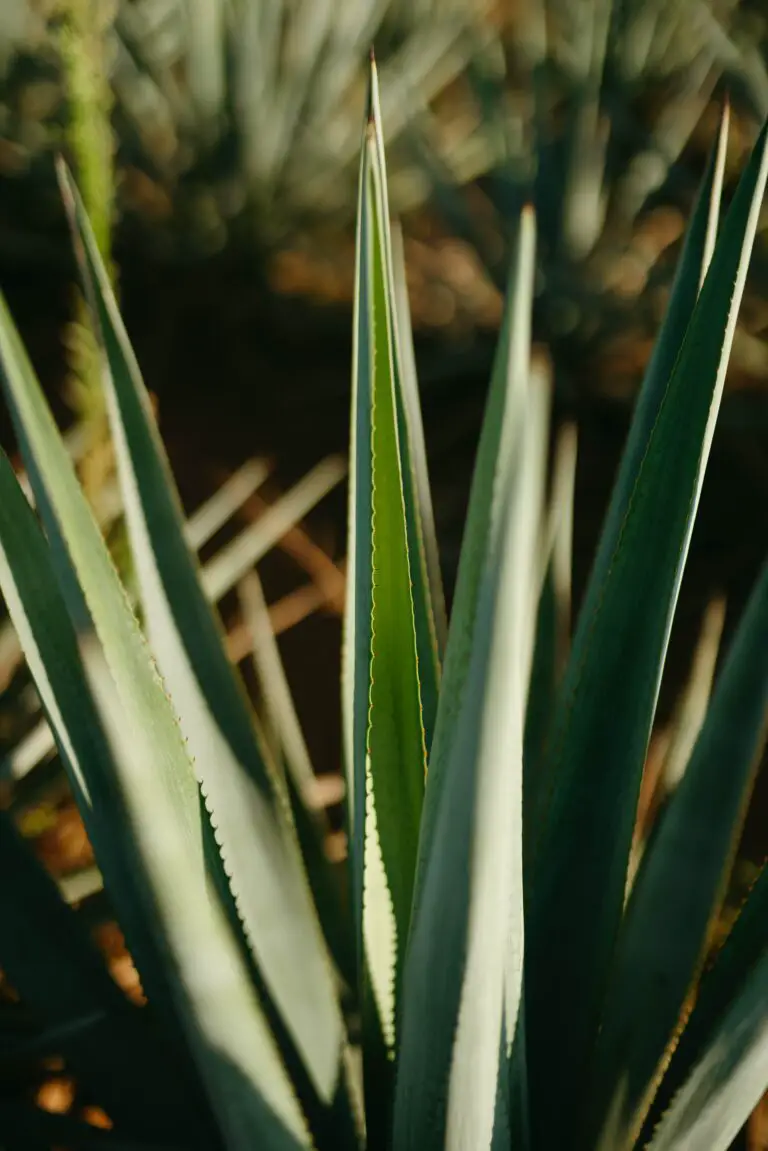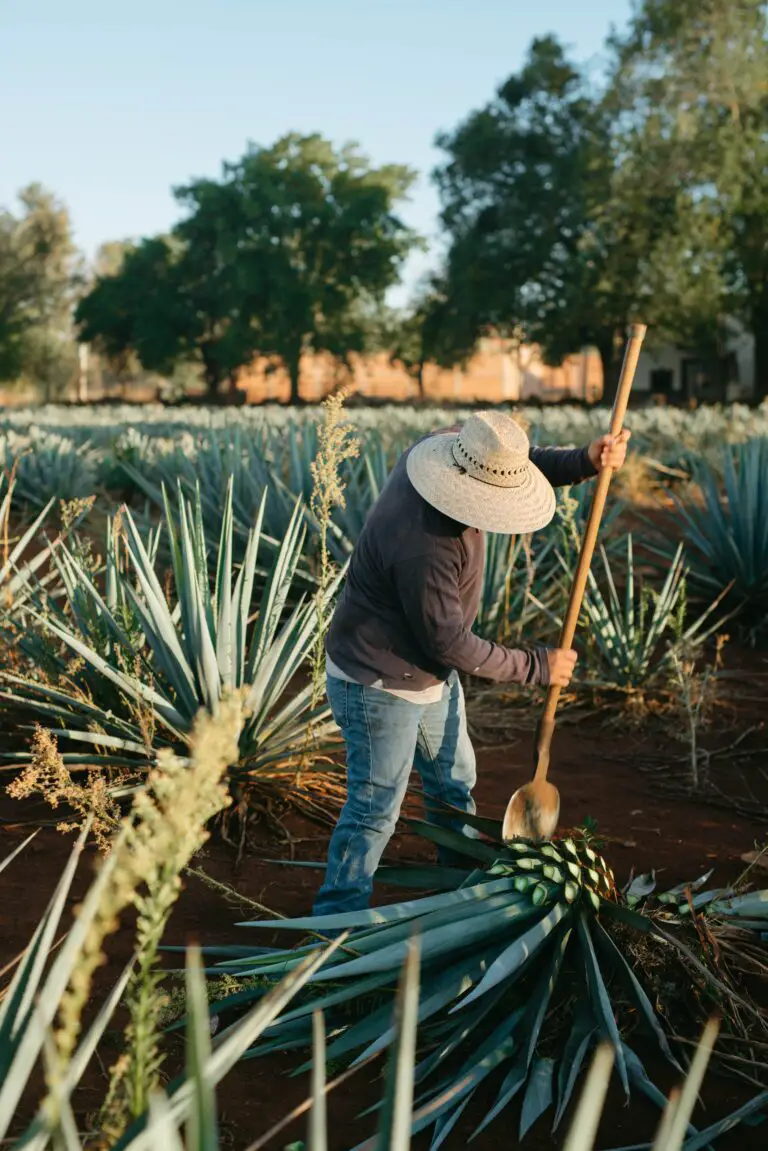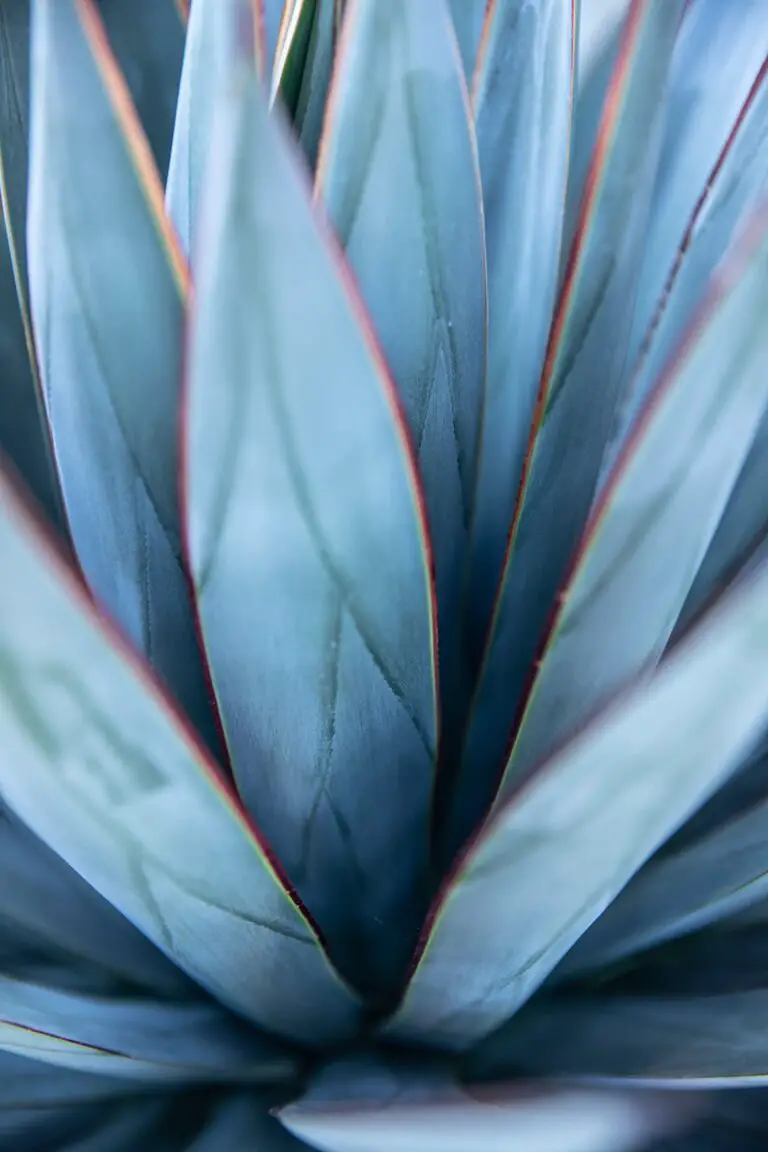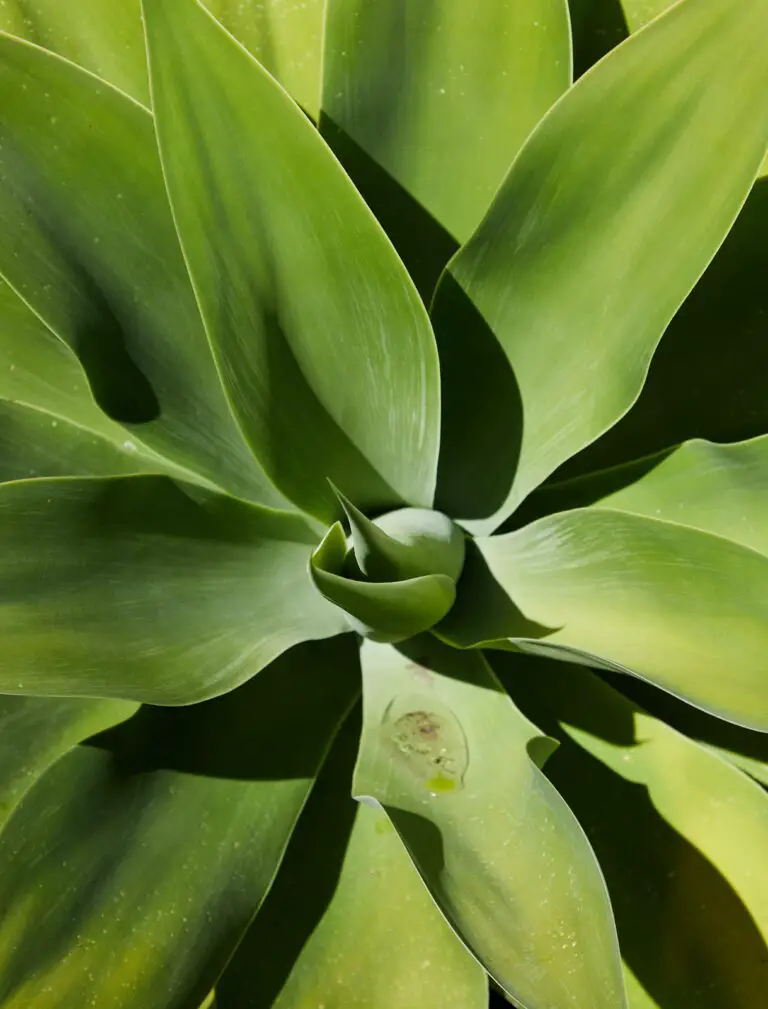Introduction to Agave Parviflora
Welcome to a journey through the intricacies of Agave parviflora, a compact gem tucked away in arid landscapes, silently conquering the hearts of succulent lovers. Often overshadowed by its larger kin, this small-flowered agave doesn’t shy from the spotlight once you delve into its unique characteristics.

This species delivers wonders in the form of waxy, dark-green leaves adorned with a symphony of white markings that whisper tales of survival in the tough conditions of their native habitat. Plant enthusiasts often marvel at the paradox of the green canvases edged with delightful, peeling fibers, a tough exterior yet a detailed, almost delicate finesse.
Given their modest size, Agave parviflora plants present themselves as living sculptures, capable of transforming a forgotten corner of the garden into a pocket-sized desert mirage. Imagine this – a quiet afternoon as the sunlight dapples through spiny silhouettes while the agave stands solemn, guarding the serenity of rocky terrain miniatures.
In a world where bigger often steals the show, Agave parviflora shines in its humility, teaching us that beauty lies in the tiniest of details, waiting for the patient observer to appreciate its understated elegance.
What is Agave Parviflora?
Welcome to the intricate and enchanting world of Agave parviflora—a small but mighty player in the diverse tapestry of desert flora. Often overshadowed by its larger relatives, this diminutive desert dweller has a quiet elegance and a resilience that deserves the spotlight.
Imagine strolling through the rugged landscapes of Arizona or Sonora, Mexico, where the Agave parviflora makes its home against all odds. In a place where every drop of water is precious, this small-flowered agave asserts its presence with a rosette of dark green leaves, each leaf artfully adorned with white, ornamental markings that could rival the filigree of a master jeweler. It isn’t just a plant; it’s a testament to the sheer willpower of life itself.
What sets the Agave parviflora apart is not just its striking aesthetic but its compelling survival story. In a hardscrabble environment where the sun is relentless and the ground unforgiving, this plant thrives with an almost stoic endurance. This unique species has adapted to its harsh surroundings with features like a waxy coating on its leaves, preserving every precious molecule of moisture.
Fascination with this species isn’t limited to its visual appeal or ecological prowess. Enthusiasts and conservationists alike have taken note of its rarity and charm. The Agave parviflora is more than a botanical curiosity; it is a living lesson in adaptation and survival.
For those eager to see this small-flowered marvel in action, a delightful video illustrates the resilient beauty of the Agave parviflora and its place among sustainable plant selections. This visual journey is a wonderful complement to our exploration, allowing us to appreciate the plant’s subtle intricacies that still photos simply can’t capture.
Curious minds seeking to delve deeper into the story of Agave parviflora will find a wealth of information out there, each detail adding to the rich narrative of this small-flowered agave’s life in the wild. So, let’s continue to treasure and learn from these silent yet enduring desert dwellers, for they have much to tell us about perseverance and beauty in the face of adversity.
Botanical Description of Agave parviflora
Amidst the vast family of succulents, the Agave parviflora emerges as a small-flowered marvel, captivating enthusiasts with its understated elegance. Not to be dwarfed in admiration by its extravagant cousins, this species commands attention through its subtle beauty and distinct characteristics.
Typically modest in size, the Agave parviflora can be likened to a natural rosette, adorning the arid landscapes where it thrives. Its leaves are a testament to its resilience—a convergence of strength and flexibility—with edges that are often lined with intriguing white fibers. These remarkable leaves unfurl from a central point, creating a mesmerizing spiral pattern that is both functional and ornamental.

When the time is ripe, the Agave parviflora unveils its most enchanting feature: a bloom stalk that seems to pierce the sky, flirting with the sun and the pollinators that dance around it. Its flowers, albeit small, are a tapestry of greens and yellows, occasionally kissed with hints of red—a color palette delicately painted by nature herself.
Interestingly, Agave parviflora’s flowering patterns are not just a visual spectacle but also mark the culmination of the plant’s lifetime—a phenomenon known as semelparity. After investing years into growing and storing energy, it allocates all its resources into a single, prolific burst of reproduction, ensuring its legacy endures.
With a reproductive strategy that is both poetic and practical, this agave ensures that future generations can arise even in the most inhospitable terrains. Its seeds, dispersed by the whims of the wind, find new footholds in the rocky earth, continuing the cycle of life in the desert realm.
Whether you stumble upon an Agave parviflora while wandering the desert trails or cultivate it within the curated confines of a succulent garden, its botanical elegance is an open invitation to revel in the wonders of the natural world—the small yet profound joys of discovering the grandeur in the minute.
Ideal Growing Conditions for Agave Parviflora
Welcome, green thumbs and Agave aficionados! If you’re eager to grow the exquisite Agave parviflora, with its slender leaves and charming flowers, then you’ve struck gold. Here’s the trove of tips for cultivating this small-flowered marvel, ensuring it thrives in your garden.
The Perfect Soil Space
First things first: soil is the bedrock of your Agave’s life. This desert gem demands well-draining soil. Think porous and gritty, akin to its native arid habitats. If you’re working with heavy or clay-rich soil, fear not. A generous mix of sand and perlite will transform it into a haven for your spiky friend.
Climate Compatibility
Heat is the heartbeat of Agave parviflora. It revels in warm, dry conditions, much like those found in its southwestern U.S. and Mexican homelands. While hardy to a degree, it prefers to steer clear of the frost’s icy fingers. If your region flirts with the cold, consider a pot for easy relocation during winter’s chill.
Sunlight’s Embrace
Like a sunbather on a beach, this Agave species basks in full sunlight. It’s not one for the shade – so let it soak in those rays for the best growth and flower production. Just make sure to acclimate your plant to intense sunlight gradually if it’s been living it up indoors.
Watering Wisdom
When it comes to watering, think ‘less is more.’ Overwatering can spell doom, so let the soil dry between drinks. The Agave is a drought-tolerant trooper; a sip here and there goes a long way. Stick your finger an inch into the soil—dry? It’s time for a modest quench.
Now, witness how these tips spring to life in the real world. Check out this video featuring a stunning array of cacti and succulents, including Agave, and glean insights into their care and passion.
Remember, folks—caring for Agave parviflora isn’t just about ticking boxes; it’s about understanding and respecting its desert lineage. Give it the right mix of soil, sunshine, and sparing sips of water, and you’ll be rewarded with a resilient and ravishing addition to your drought-tolerant garden.
Planting and Maintenance Advice for Agave Parviflora
Unveiling the secrets to thriving Agave parviflora in your own space starts with understanding the planting process – it’s not rocket science, but a dash of know-how goes a long way. Picture this: you’ve got a tiny Agave parviflora, no bigger than your palm, with ambitions to grow into a small-flowered marvel. The first step is ensuring you’ve got the right spot – somewhere with ample sunlight, because these beauties are sun worshippers. Scoop out a home for them in well-draining soil; think sandy or gritty to mimic their native habitat. This little precaution sets the stage for a drought-tolerant dynamo.
Watering is next on the agenda. Here’s the rule of thumb: treat it like a succulent. These plants don’t want a deluge; they crave a sip, not a soak. Ensure the soil is almost dry before you even think about watering again. This mimics the natural arid conditions they love. Overwatering? That’s the highway to root rot, and nobody wants to take that exit.
Feeding your Agave parviflora is like seasoning food: a little goes a long way. A slow-release fertilizer in the growing season is all the pep talk it needs. Keep away from heavy-handed nitrogen dosages; you don’t want to shock the system of this desert native. Low-maintenance is the name of the game with Agave parviflora.
At some point, your plant may have pups – and no, we’re not talking about dogs. Agave offsets, otherwise known as ‘pups’, are mini versions of the mother plant that emerge from the base. These can be gently removed and replanted, allowing you to grow your Agave family or share with fellow enthusiasts.
While maintenance is minimal, vigilance for pests like mealybugs and agave snout weevils is a must. If you spot a mealybug, dab it with alcohol on a cotton swab. As for the snout weevil, prevent them from getting cozy by keeping an eagle-eye on your plant’s health and reacting to any signs of distress immediately.
Remember, growing Agave parviflora is a slow and steady journey – they’re the marathon runners of the plant world. With patience and these nuggets of advice, you’re on track to nurturing a robust, picturesque specimen that becomes the talk of your garden. For a visual guide to container gardening which includes succulents like Agave parviflora, watch the video below. There’s nothing like seeing real-life examples to inspire and inform your gardening practices.
Landscape and Decorative Uses
Have you ever considered the small yet mighty Agave parviflora as a pivotal piece in your garden’s tapestry? As a green thumb enthusiast or someone just diving into the world of gardening, the use of Agave parviflora in landscaping can add a touch of finesse and structure to any outdoor space. Sometimes nicknamed the ‘thimble agave’ for its quaint size, this desert marvel proves that great things indeed come in small packages.
Imagine a minimalist garden where Agave parviflora stands sentinel along a pebbled path, or clustering around a serene water feature. Their rosette form and distinctive spiky leaves provide a stunning contrast against softer, billowing plants. Incorporating these gems into your garden isn’t just about aesthetic appeal; their low water requirement makes them an eco-friendly pick for water-wise horticultural designs.
Small Spaces and Urban Gardens
Don’t let a lack of space stifle your gardening dreams. Urban dwellers often assume that their concrete surrounds are impervious to greenery. Not so with the resilient Agave parviflora. They make perfect potted companions for balconies and terraces, offering an oasis vibe in the concrete jungle. Picture this: a rooftop garden under the city lights, punctuated by these small-flowered agaves, making a clear statement of nature thriving in urbanity.
Thematic Gardens and Xeriscaping
Theme gardening is all the rage, and Agave parviflora fits like a glove in a desert or xeriscape garden theme. Nestle them among sandy soils and rocks, and watch them blend seamlessly into a scene reminiscent of the wild, arid landscapes from where they hail. Their drought tolerance is unparalleled, requiring infrequent watering thus honoring the principles of xeriscaping and sustainable gardening.
Ornamental Accents and Focal Points
Turn heads in your outdoor space by using Agave parviflora as an ornamental accent. A cluster in a strategic corner or front-and-center in a circular driveway can act as elegant focal points. They are particularly fetching when backlit by early morning or late afternoon sun, casting dramatic shadows and showcasing their spiked silhouette.
But it’s not all visual charm; Agave parviflora has a practical side too. Their structured form can provide a year-round green that’s maintenance-free, ideal for gardeners who appreciate beauty without the constant upkeep. And for those concerned about the environment, they are a green dream, upholding biodiversity while demanding very little from our precious water resources.
As you embrace the small-scale grandeur of Agave parviflora, let’s not forget its ease of propagation. Sharing is caring, and propagating these plants for friends and family is a breeze, spreading the joy of gardening. With every division or offset, you’re not just gifting a plant, but an experience and an emblem of resilience. And maybe that’s the real marvel of the small-flowered Agave parviflora; it’s a testament to beauty, tenacity, and the wonders of nature.
Potential Challenges in Cultivation
Welcome to the gritty reality of gardening where we dive into the tough love needed for nurturing Agave parviflora. This small-flowered gem requires a keen eye and sturdy resolve to combat the trials it may face in your garden oasis.

First up, let’s talk invaders—the pesky pests that see your precious plants as their next meal ticket. Tiny but mighty, mealybugs and scale insects often sneak onto the scene. Imagine this: a gardener, much like yourself, strolls out on a sun-kissed morning only to find her prize Agave parviflora cozying up with a film of these unwelcome critters. It’s a sight for sore eyes, but fear not, for vigilance with insecticidal soap and neem oil can turn the tide in your favor.
Battling Diseases
Next in line, diseases — the stealthy operatives that could leave your agave withering in despair. You’re tending to your garden, whistling a tune, when suddenly you spot it: root rot or fungal spots making a claim on your green beauty. This is no time for panic but for action! Arm yourself with good drainage and proper airflow—you’re the guardian of your garden, after all.
Environmental Stressors
Last but certainly not least, environmental stressors, the silent yet potent force. Picture this: Against a painted sky, your hardy Agave parviflora stands tall, only to be caught in a summer downpour that’s much too generous, or a winter chill that bites more than it should. Weather can be fickle, and our small-flowered marvel may suffer. Wise placement and the shelter of a loving greenhouse can shield your succulent from the moody elements.
But don’t be discouraged, intrepid gardener! With attention and care, the challenges faced by Agave parviflora become part of the journey – markers of your dedication and green-thumbed prowess. Roll up your sleeves, for the small-flowered marvel rewards those who persevere!
Propagation Techniques for Agave Parviflora
Welcome, intrepid gardeners and Agave enthusiasts, to the fascinating world of propagating the Agave parviflora! These hardy little flora gems can be multiplied in a few different ways, so let’s get up close and personal with the methods that will help your small-flowered marvels multiply.
Sowing the Seed of Success
Starting our journey at the very beginning, we talk seeds. Every Agave parviflora starts its life as a tiny speck waiting to burst into life. To germinate these seeds, patience and precision are key. You’ll want to use a well-draining soil mixture—think sand and perlite—and place your seeds on the surface. Cover them with a fine layer of soil, mist lightly, and keep at a toasty temperature between 70-80°F. Light is a friend to these seeds, so be sure to grant them plenty of it! In just a few weeks, tiny green shoots will herald the start of your Agave’s life journey.
But, of course, seeing is believing. Here’s a video that captures the essence of sowing and nurturing your Agave seeds:
Offset Offerings: A Family Affair
Now let’s talk offsets—the little clones that sprout at your Agave’s base. These youngsters are itching to strike out on their own, and with a little assistance, they’ll flourish into individual plants. Once an offset has a few leaves of its own, gently separate it from the mother plant. Use a sharp, clean knife and sever the connecting root carefully. Grant it a new home in similar well-draining soil, and like a proud parent, watch as it establishes its own roots. Voilà—a new Agave parviflora is born!
Remember, propagation is both an art and a science. Each seed, each offset brings with it a promise of growth and the excitement of a new beginning. Nurture them with knowledge and care, and you’ll witness the beauty of Agave parviflora multiplying before your very eyes. Now go forth and propagate!
Sustainability and Ecological Impact
In the realm of botanical wonders, Agave parviflora, with its compact and alluring presence, does more than just adorn our gardens and landscapes. Its cultivation holds a delicate position in the realm of sustainability and plays a pivotal role in the larger ecological system. Let’s unearth the layers of environmental significance behind this small-flowered marvel.

When we think of Agave parviflora, it’s easy to picture its striking silhouette against the desert backdrop. However, the cultivation of this species goes beyond aesthetic appeal. Cultivating agave can be a low-impact agricultural practice due to the plant’s hardiness and minimal need for water, nutrients, or pesticides. This resilience translates into reduced resource consumption and a smaller ecological footprint—a win for the environment and growers alike.
Embracing an Eco-friendly Cultivator
Imagine a crop that coexists peacefully with its environment, asking little and giving back much. Agave parviflora is precisely that. Through practices like rainwater harvesting and passive solar design, farmers can integrate agave into their fields as a sustainable crop. By doing so, they bolster biodiversity, enrich the soil, and provide a sanctuary for countless insects and birds. Farms that adopt agave are often brimming with life, setting the stage for pollinators to perform their vital dance amidst agave blossoms.
A Champion of Conservation
The small stature of Agave parviflora is misleading—its ecological impact can be immense. Conservation efforts for this plant are imperative as they shield not only the agave itself but also the myriad species that rely on it. Engaging in and supporting such initiatives ensures that this plant continues to thrive in its natural habitat. Doing so helps preserve delicate ecosystems and the benefits they bestow upon humans, like carbon sequestration and soil stabilization.
True to its form, Agave parviflora tells a story of resilience and ecological harmony. It’s a testament to the beauty that arises when conservation marries sustainability and teaches us the immense value of every cog in the wheel of our ecosystem.
Frequently Asked Questions
Got questions about Agave parviflora? You’re not alone! This small-flowered agave strikes a chord with many due to its unique characteristics. Let’s dive into the world of this fascinating plant and answer some of those burning questions.
What is Agave parviflora Known For?
Well-known among garden enthusiasts and botanists alike, Agave parviflora is celebrated for its compact size and striking floral spikes. Unlike its larger cousins, this agave tucks itself neatly into smaller spaces, making it perfect for cozy garden corners or as part of a diverse succulent collection. It produces creamy-white flowers that attract a host of pollinators, turning your garden into a buzzing hub of activity.
How to Care for Agave parviflora?
Caring for Agave parviflora is a breeze, honestly. This hardy little plant prefers well-drained soil and full sun, showing off its resilience to drought conditions. Water it sparingly and watch it thrive – it’s as if this agave truly understands the value of ‘less is more.’ The key is to mimic the natural dry environment it’s accustomed to, which makes it a perfect succulent for those who are prone to forgetting the watering can.
Is Agave parviflora Suitable for Indoor Growing?
Thinking of bringing the outdoors in? Agave parviflora adapts well to indoor environments as long as you can provide it with its non-negotiables: plenty of light and limited watering. Find a sunny windowsill, and this hardy plant will be just as happy indoors as it would be basking in the desert sun. It’s the ideal choice for adding a touch of green to urban dwellings where outdoor space is at a premium.
Can Agave parviflora Survive Frost?
If Jack Frost is knocking at your door, moving your Agave parviflora to a sheltered spot is a must. While it’s tough as nails in many respects, frost is not its friend. A light frost might be tolerable for a short period, but prolonged exposure can be harmful to this desert beauty. If you’re in a cooler climate, consider potting it so you can whisk it away to warmth when winter waves its chilly hand.
How Long Does Agave parviflora Live?
Patience is a virtue, and with Agave parviflora, it pays off. This agave takes its time to reach maturation, often spreading its wings fully after a few years. But once it does, the payoff is grand – showcasing a stunning floral display that can last several weeks. And while it may be a ‘once in a lifetime’ show since this agave typically flowers once before its life cycle ends, it’s an event that’ll leave you with unforgettable memories.
What Pests and Diseases Affect Agave parviflora?
Fortunately for us, Agave parviflora does not roll out the welcome mat for pests and diseases. However, it’s not invincible. Overwatering can lead to root rot, and the occasional mealybug or scale insect might find your agave too tempting to pass up. Regular checks and maintaining dry conditions go a long way in keeping these potential problems at bay, ensuring your agave stays healthy and vibrant.



